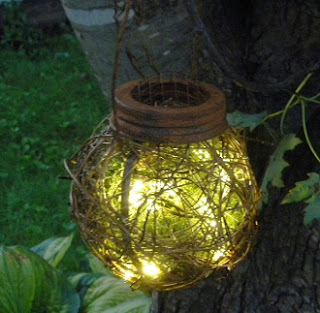Bright and Beautiful
“Our task must be to free ourselves... by widening our circle of compassion to embrace all living creatures and the whole of nature and its beauty.”
― Albert Einstein
Ever enjoyed the beauty of the marvel of many fireflies glowing in the dark? Thought how the small flies manage to do it? The credit for that goes to Bioluminescence.
― Albert Einstein
 |
| Fireflies in the jar |
The term bioluminescence originates from the Greek term bios which means living and the Latin term lumen meaning light. The phenomenon of production of light by any living organism by means of the energy produced from a naturally occurring chemical reaction is known as bioluminescence. Creatures like fireflies and anglerfish, couple of those who can produce light, produce the chemical luciferin (which is a pigment) and luciferase (an enzyme). The light generated is a result of the reaction between luciferin and oxygen. Luciferase acts as the catalyst in the reaction & hastens the process.
The spectacle of bioluminescence is most prevalent in the marine world wherein almost 90 per cent of deep-sea marine creatures are estimated to be capable of bioluminescence in one form or another. Different marine beings emit varied colours of light like blue, green, red, infrared and yellow.
 |
| Glowing fireflies squid |
Many long-time sailors have often noticed dazzling display of green light beneath the surface of oceans in tropical seas. Researchers from Scripps Institution of Oceanography in San Diego had attributed the beautiful green glow to bioluminescent worms with biological mechanisms which produce the light.
Scientists however, have found a way to make full use of the natural light produced by fireflies. Scientists from Syracuse University have come up with a way to do so using bioluminescence by employing Nano science. After researching, the group of scientists stated that the light emitted by fireflies is one of the best examples of bioluminescence and the light is very bright and powerful. Their work entitled “Designing Quantum Rods for Optimized Energy Transfer with Fireflies Luciferase Enzymes” was published online in May 2012. In the research laboratory, the enzyme luciferase was attached to a Nano rod’s surface and luciferin was added later. Luciferin acted as the fuel and the energy released was transferred to the nanorods, making them glow. The process employed was called Bioluminescence Resonance Energy Transfer (BRET). So, one day in the near future, we may gain access to a range of lights which would not require electricity or batteries.
 |
| Biolluminiscence |
The purpose of bioluminescence however is not simply generating beautiful glow and light. Other than its beauty, bioluminescence helps creatures to camouflage, lure and attract preys, defend themselves against predators, attract mates, repel potential predators and even communicate.
We human beings have had to search endlessly for different sources of light to dispel darkness. But other creatures have been lucky. Thanks to the marvel of bioluminescence, they can carry light in their own bodies.
